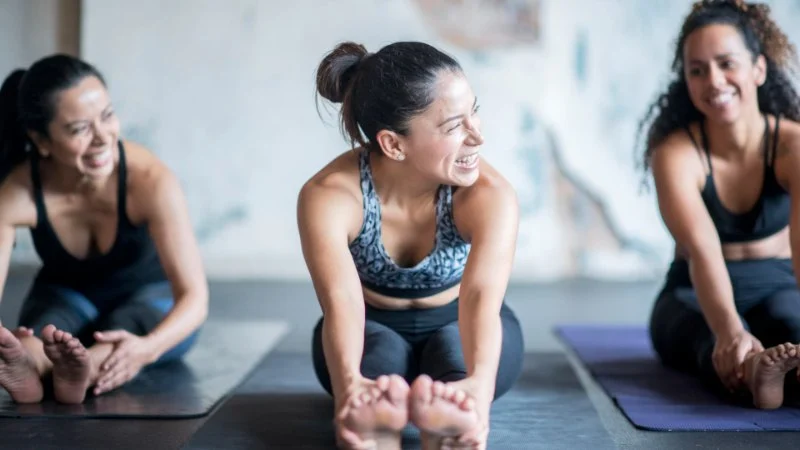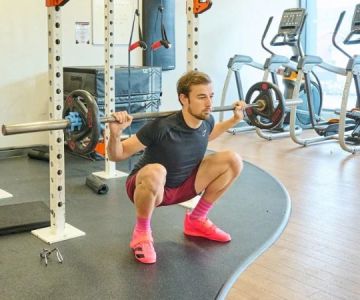
- 1 - Understand the Science Behind Yoga Breathing
- 2 - Improve Flexibility with Consistency
- 3 - Use Strengthening Exercises to Support Yoga Poses
- 4 - Proper Nutrition to Fuel Your Yoga Practice
- 5 - The Power of Rest and Recovery in Yoga
- 6 - Cultivate Mental Focus through Yoga Meditation
- 7 - Incorporate Mindfulness to Enhance Your Yoga Journey
- 8 - Listen to Your Body for Injury Prevention
1. Understand the Science Behind Yoga Breathing
Breathing is at the core of yoga, and understanding its science can significantly enhance your practice. Research has shown that proper breathing helps control the nervous system, reduce stress, and increase concentration. The technique known as Ujjayi breath, for example, involves breathing through the nose while slightly constricting the throat to create a sound, helping to maintain a steady rhythm throughout your practice. This type of controlled breathing can improve your endurance and allow you to hold poses longer.

F45 Training Williamsville NY / f45 williamsville
WilliamsvilleErie CountyNew York
5475 Sheridan Dr, Williamsville, NY 14221, USA
2. Improve Flexibility with Consistency
Flexibility doesn’t happen overnight; it’s a gradual process that requires consistent practice. Scientific studies have proven that regular stretching improves the elasticity of muscles and the range of motion in joints. For yoga practitioners, it's important to focus on both dynamic stretches before the practice and static stretches post-session. For example, incorporating forward bends, hip openers, and shoulder stretches into your routine can lead to significant flexibility gains over time. Start with gentle stretches and gradually increase intensity as your flexibility improves.

USA Youth Fitness Center / queen creek gymnastics
Queen CreekMaricopa CountyArizona
24648 S Ellsworth Rd, Queen Creek, AZ 85142, USA
3. Use Strengthening Exercises to Support Yoga Poses
While yoga is often associated with flexibility, strength plays a vital role in performing many poses correctly. Yoga poses like Downward Dog, Plank, and Warrior I require strong muscles to support the body’s weight. Adding strengthening exercises to your routine can enhance your yoga performance. For instance, incorporating bodyweight exercises like push-ups, squats, and planks can help build the core, arm, and leg strength needed for advanced poses. Hot Fitness offers specialized strength training equipment that can complement your yoga practice.
4. Proper Nutrition to Fuel Your Yoga Practice
Nutrition is essential to support any physical activity, and yoga is no exception. To improve your yoga practice, focus on foods that provide sustained energy and promote muscle recovery. A balanced diet rich in whole foods—like leafy greens, lean proteins, and complex carbs—will help your body perform at its best. Studies show that eating a meal with protein and carbohydrates about 1-2 hours before your practice can give you the energy you need for a more effective session. Also, don't forget hydration: staying well-hydrated keeps your muscles flexible and energized.
5. The Power of Rest and Recovery in Yoga
Rest is often overlooked but is just as important as the practice itself. Scientific evidence supports that rest and recovery are key to muscle growth and preventing overuse injuries. Allowing your body to rest between yoga sessions gives your muscles time to repair and strengthen. Incorporating rest days into your schedule is essential for long-term progress. Additionally, practices like yoga Nidra (a deep relaxation technique) can help speed up recovery by reducing stress and promoting restorative sleep.
6. Cultivate Mental Focus through Yoga Meditation
Yoga isn’t just about physical postures—it’s also about mental clarity. Meditation practices incorporated into yoga routines have been shown to improve focus, reduce anxiety, and enhance overall mental health. Mindful meditation during or after yoga sessions allows you to center your thoughts, connect with your breath, and stay present on the mat. Studies confirm that meditation can increase the thickness of the prefrontal cortex, which is linked to better decision-making and emotional regulation.
7. Incorporate Mindfulness to Enhance Your Yoga Journey
Mindfulness in yoga is about being fully aware of each movement, breath, and sensation in your body. Research has shown that mindfulness practices in yoga lead to improved self-awareness and increased body-mind connection. The ability to be mindful on the mat helps you execute poses more effectively and can even carry over into other areas of life, improving overall well-being. To incorporate mindfulness, try to focus on your breath as you move through each pose, without rushing, and tune into how your body feels.
8. Listen to Your Body for Injury Prevention
One of the most important science-backed tips for yoga is listening to your body. Many injuries in yoga occur when practitioners push themselves too hard or don’t respect their body’s limitations. Research shows that body awareness and mindful movement can prevent strain and injury. If a pose feels uncomfortable, don’t push through the pain. Instead, modify the pose or take a break. Being mindful of your body’s signals is the key to a long-lasting and injury-free yoga practice.







 Planet Fitness4.0 (72 reviews)
Planet Fitness4.0 (72 reviews) Yoga for Bliss5.0 (2 reviews)
Yoga for Bliss5.0 (2 reviews) TKO Fitness4.0 (74 reviews)
TKO Fitness4.0 (74 reviews) JCFit at Journal Square4.0 (26 reviews)
JCFit at Journal Square4.0 (26 reviews) Zfit Studio LLC5.0 (11 reviews)
Zfit Studio LLC5.0 (11 reviews) Super Nutrition Fitness Center - East Peoria4.0 (89 reviews)
Super Nutrition Fitness Center - East Peoria4.0 (89 reviews) The Best Ways to Use a Treadmill for Tempo and Interval Sessions During Inclement Fall Weather
The Best Ways to Use a Treadmill for Tempo and Interval Sessions During Inclement Fall Weather Science-Backed Tips for Improving Your Muscle Gain: Proven Strategies
Science-Backed Tips for Improving Your Muscle Gain: Proven Strategies The Best GPS Watches for Fall Training: Battery Life, Accuracy, and Features
The Best GPS Watches for Fall Training: Battery Life, Accuracy, and Features How to Do Home Workout Safely and Effectively
How to Do Home Workout Safely and Effectively How to Do Muscle Gain Safely and Effectively
How to Do Muscle Gain Safely and Effectively Best Apps to Track Your CrossFit Progress and Achieve Your Fitness Goals
Best Apps to Track Your CrossFit Progress and Achieve Your Fitness Goals